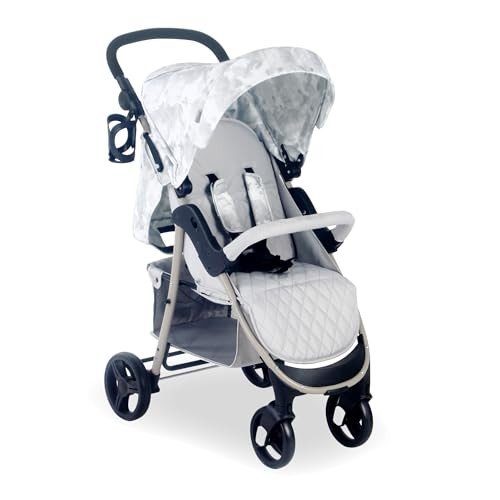The Top Reasons People Succeed In The Prams Newborns Industry

The Comprehensive Guide to Choosing the Right Pram for Newborns
The arrival of a newborn brings both immense pleasure and an array of decisions that moms and dads should browse. Among the vital purchases is choosing the right pram, which not only makes sure the baby's safety but also provides benefit for moms and dads. This guide intends to supply an extensive appearance into choosing the suitable pram for newborns, discussing different types, features, security factors to consider, and upkeep suggestions.
Understanding the Types of Prams
Prams vary widely in design and functionality, which can be overwhelming for new parents. Here's a breakdown of the most common types of prams offered in the market:
| Type of Pram | Description | Pros | Cons |
|---|---|---|---|
| Traditional Prams | Created for infants, these prams typically have a deep bassinet. | Comfy for newborns, Safe for sleeping. | Bulky and heavy, Hard to navigate in tight areas. |
| Travel Systems | A combination of a safety seat and a stroller, enabling easy shift in between vehicle and stroller. | Flexible and convenient, Cost-effective. | Might be much heavier than standalone strollers, Not all elements are suitable for newborns. |
| Lightweight Strollers | Compact and easy to steer, these are perfect for parents on the go. | Portable and simple to utilize, Generally more budget friendly. | Less cushioning, May not recline totally for newborns. |
| Convertible Strollers | Strollers that can adapt from a carrycot for newborns to a toddler stroller. | Multi-functional and long-lasting, Adjustable configurations. | Can be expensive, May need more maintenance. |
| All-Terrain Strollers | Developed for rough terrains, these strollers usually feature larger wheels. | Resilient for outdoor use, Stable on numerous surface areas. | Heavier and bulkier, Can be tough to steer indoors. |
Key Features to Consider
When picking a pram for newborns, numerous functions can considerably affect functionality and safety. Here are vital functions to bear in mind:
- Safety Harnesses: Look for a pram that includes a five-point safety belt to guarantee the baby stays secure while in transit.
- Reclining Seat: A fully reclining seat permits newborns to lie flat, which is essential for their spinal column and breathing health.
- Suspension System: A good suspension system provides a smoother ride, important for the fragile bodies of newborns.
- Brake System: Ensure the pram has a dependable brake system to avoid mishaps. Hand brakes or foot brakes can be effective choices.
- Storage Space: Consider a pram with ample storage area for diaper bags, shopping, or other fundamentals.
- Weight and Foldability: Choosing a light-weight alternative that folds easily is important for benefit, especially for public transport.
Safety Considerations
Prioritizing safety is paramount when it concerns prams for newborns. Here are vital security suggestions to make sure the wellness of your baby:
- Check for Stability: Make sure the pram remains steady when stationary. A broad base can supply increased stability.
- Prevent Overloading: Only place items recommended by the producer in the storage basket; excess weight can cause tipping.
- Regular Maintenance: Inspect the wheels, brakes, and harness systems routinely to ensure they function effectively.
- Buckle Up: Always use the safety belt, even for quick trips, to avoid the baby from slipping or falling out.
- View for Age Recommendations: Follow the manufacturer's standards relating to weight limitations and age recommendations for security.
Upkeep Tips
Looking after a pram guarantees its longevity and security for your newborn. Here are essential upkeep suggestions:
- Regular Cleaning: Wipe down the pram frame and wash materials according to producer guidelines to keep it sanitary.
- Inspect the Wheels: Check wheels for damage and tidy them routinely to prevent obstructed movement.
- Check Folding Mechanism: Ensure the folding system operates smoothly without sticking or jamming.
- Lubricate Moving Parts: Apply the appropriate lube to moving parts to guarantee quiet and smooth operation.
- Shop Properly: When not in usage, keep the pram in a dry area to prevent rust and maintain fabric integrity.
Frequently Asked Questions (FAQs)
1. How long can just click the next document remain in a pram?
For newborns, it is usually advised to restrict uninterrupted time in a pram to about 1-2 hours to prevent concerns with advancement and flow.
2. Which pram is best for a newborn?
The best pram for a newborn is one that offers a totally flat recline, has a good safety harness, and meets present security standards. Lots of moms and dads prefer travel systems for their versatility.
3. Can I use a stroller without a safety seat for a newborn?
It's advised to utilize a stroller with a flat or near-flat recline for newborns. Some strollers are just suitable from six months and up, so examine the manufacturer's guidance.
4. When should I switch from a pram to a stroller?
You can move from a pram to a stroller when your baby can stay up independently, typically around 6 months, but this can differ. It's constantly best to speak with the individual pram or stroller guidelines.
5. What is the best method to clean my pram?
Always refer to the manufacturer's instructions, however usually, you can clean materials with moderate soap and water and wipe down difficult surfaces with disinfectant wipes.
Selecting the right pram for a newborn is a considerable choice that affects both the baby's comfort and the moms and dad's lifestyle. By understanding the types of prams readily available, crucial functions to consider, security strategies, and upkeep tips, parents can make informed decisions that enhance their family's movement and guarantee the safety of their kids. Investing time in research study now settles in the long run for satisfying getaways and cherished memories.

